
views
Keeping Plants Warm
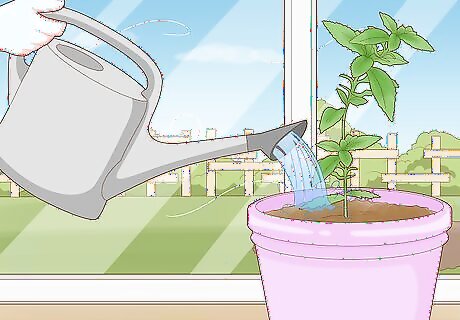
Water plants thoroughly in cold weather. Water traps heat in the soil. Watering your plants keeps the soil warm and helps them withstand the cold. Keep your plant on its watering schedule to protect it from cold weather. Water plants before a frost to lock more heat inside the soil. Be wary about over-watering your plant. Always check if the soil is moist before watering. If it is, then the plant doesn’t have to be watered. If the soil is moist and the plant is still withering, then it may be too cold. Try another method to protect it.
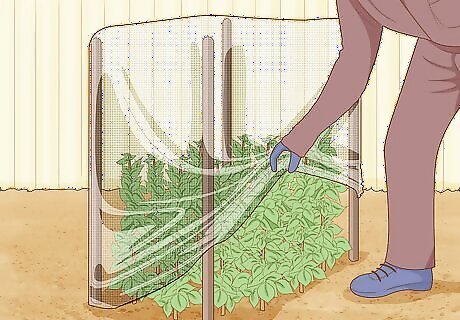
Lay a row cover over plants that stay outside in cold weather. A row cover is a sheet, usually made of white fabric, that has many uses for protecting plants. It’s insulated, so it will keep your plants warm enough to withstand frosts. Lay the cover over your plants, or build a simple structure to keep it raised above them. Row covers are available at garden stores, or from the internet. A regular sheet could work as well, but it may not trap as much heat as a row cover. Monitor your plants to make sure they aren’t wilting. Row covers keep heat in, but they still may not be enough for very cold temperatures.

Cover low plants with straw or mulch if there is a quick frost. If a frost strikes unexpectedly, protect your smaller plants with emergency insulation. Straw or mulch traps heat and keeps the soil and plant warm. Cover plants that are only a few inches tall completely. Then remove the insulation when the frost passes. This is only a short-term solution. Don’t leave your plants covered for more than a few days or they’ll die from lack of sunlight. Remove the mulch or straw when the weather warms up. If the weather doesn’t warm up, replace the straw with a row cover or move the plants to a warmer location.
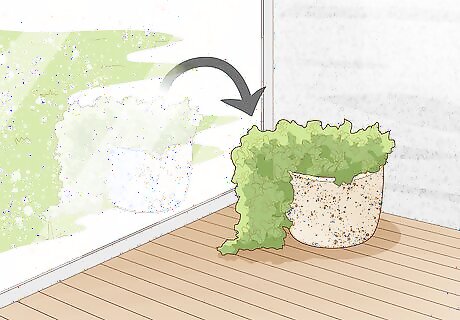
Bring potted plants inside when the weather gets colder. If you have potted plants in your garden, they’re easy to protect once the weather gets colder. Simply pick them up and bring them inside if you have room. Leave them near a window so they still receive plenty of sunlight and continue watering them like you normally would. Good places to store potted plants are windowsills, in corners, or on unused tables. Put a plate under the pots so the water doesn’t leak onto your furniture. If you have too many potted plants to bring inside or there is no room in your home, there are still many ways to keep them warm outside.
Preventing Plants from Overheating

Put down 4–6 inches (10–15 cm) of mulch if there will be extreme heat. Mulch insulates the soil and prevents it from getting too hot or too cold. If your area is prone to extreme heat, laying a thick layer of mulch in your garden helps keep the soil temperate and protects the plants from overheating. Spread the mulch out over all the soil in your garden to provide a sufficient protective layer. Mulch doesn’t need replacement very often. Placing a new layer down every 1 or 2 years protects your soil for all weather conditions and seasons.
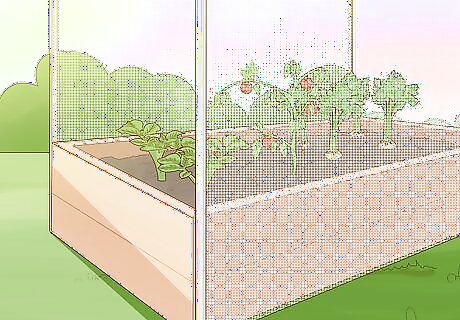
Cover plants with a row cover to provide shade. In extreme temperatures, sunlight can bake plants. A row cover also works in hot weather because it provides shade for plants and keeps them cool. Cover all of your plants if there is a heatwave or unseasonal temperature rise that should shock your plants. Check your row cover model to see if it allows sunlight through. If it doesn’t, then remove the row cover for 4 hours every day so the plants still get enough sunlight. Some plants, especially vegetables, require more sunlight. If you grow vegetables, give them 4-6 hours of sunlight every day. Removing the row cover also allows helpful insects like bees to reach the plant.

Water your plants in the early morning to the water doesn't evaporate. If you water your plants during the day when it’s hottest, all the moisture will evaporate before your plant can absorb it. Instead, water your plants in the early morning when it’s still cool. This you’re your plants have several hours to absorb the water before the temperature gets too hot. For another option, water in the evening when the sun starts going down.
Keeping Animals Away
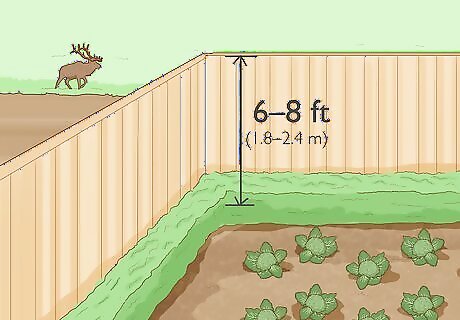
Surround your property with a 6–8 ft (1.8–2.4 m) fence to keep deer out. Deer are some of the biggest culprits for eating people’s gardens. If there are deer in your area, build a solid fence around your property so they can’t get near your garden. Make the fence at least 6 ft (1.8 m) tall so the deer can’t jump over it to get to your plants. If you don’t want to fence in your entire property, then build a 6 ft (1.8 m) fence that encompasses your whole garden area. Animals don’t fight as hard to get into areas if they don’t know food is there. Consider making your fence solid so animals can’t see through it. They may be less inclined to try and enter your property if they can’t see your garden.

Build a 3 ft (0.91 m) chicken wire fence to keep small animals out. Smaller animals like rabbits and woodchucks are another nuisance for home gardens. To keep these pests away, build a simple wire fence. Pound 4 3 ft (0.91 m) stakes into the ground around your garden. Then wrap a layer of chicken wire around the poles. Secure it to the poles with wire, string, or staples. Leave the top 1 foot (0.30 m) of the fence unattached to the poles. That way, if an animal starts climbing the fence, it will fold over and the animal will fall off. Make sure the fence doesn’t have openings that are bigger than 1 inch (2.5 cm), because small animals can squeeze through spaces any larger.

Dig a 3 feet (0.91 m) trench and line it with chicken wire to prevent burrowing. Groundhogs and woodchucks can burrow under fences and eat your plants without you even noticing. Keep burrowing animals away by digging a 3 ft (0.91 m) trench around your garden. Then line the entire trench with chicken wire and fill it back in with soil. This should prevent animals from burrowing into your garden. Combine this method with a surface fence as well. Burrowing animals could still come to the surface and walk into your garden without some kind of barrier.
Removing Insects

Pick large insects off manually. Some insect pests like caterpillars or Japanese beetles are large enough to remove by hand. Put on a pair of thick gloves and inspect your plants for bugs every morning. Pick off any large ones that are crawling on your plants. If you aren’t sure whether an insect bites or not, use a pair of tweezers or a gardening shovel. Don’t try to remove bees or wasps by hand or you could get stung. Save the bugs in a jar and transfer them to another part of your property. Move them to other plants that you don't mind them eating. If you don't want them on your property at all, try transporting them to a local park.
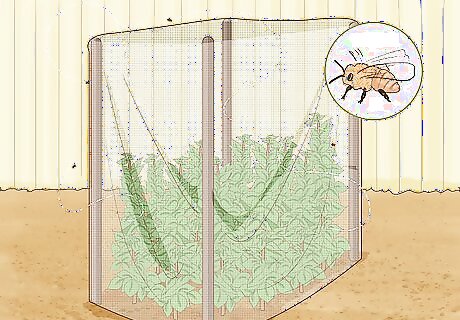
Lay row covers over the plants to keep insects off the plants. A final use for row covers is a block against plant-eating insects. If bugs are a big problem in your area, lay a row cover over your plants to keep smaller insects like aphids off them. Remember to take the cover off for 4 hours a day to let sunlight and helpful bugs get to the plants.
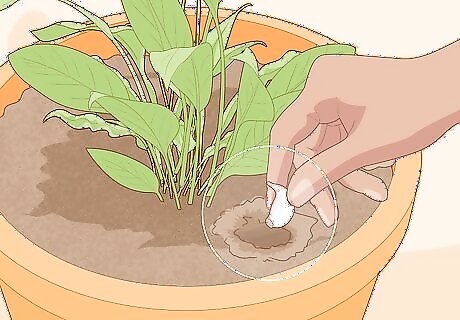
Place a garlic clove in the soil of potted houseplants to repel bugs. The smell of garlic naturally repels some bugs. If there are always flies or other insects around your houseplants, place a garlic clove just under the soil. You could also try this outside. However, the garlic smell may dissipate outdoors and not work as well. There are also garlic repellent sprays that can keep bugs away. These should work better for outdoor use.

Keep insects off outdoor plants with a pepper-water spray. If you want to avoid using chemicals and insecticides, a simple mixture can repel bugs. Mix 1 gallon (3.8 l) of water, 1 tbsp (15 g) of red pepper flakes, and 6 drops of dish soap in a bucket. Let the mixture sit for 36 hours so the spice infuses with the water. Then pour the mixture into a spray bottle and spray your plants with it. To speed the process, boil the water and pepper flakes in a pot for 15 minutes. Then let the mixture sit for 24 hours before using it. Other spices like black pepper, paprika, jalapenos, and cayenne will work as well. Anything spicy tends to keep insects away.











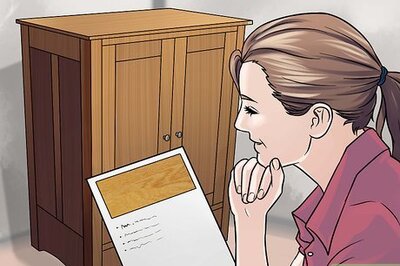
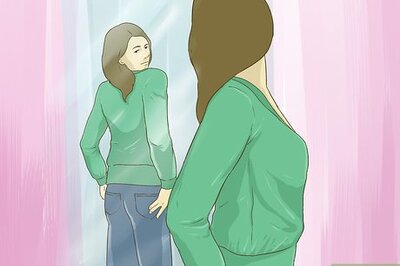







Comments
0 comment